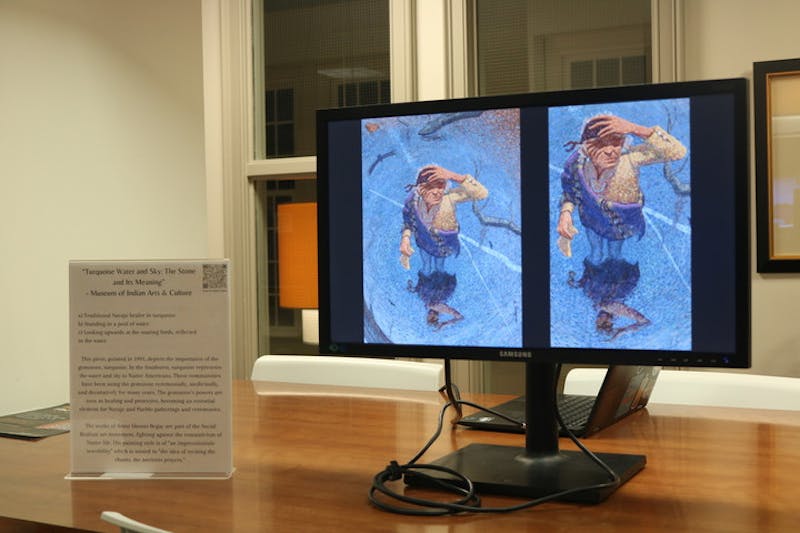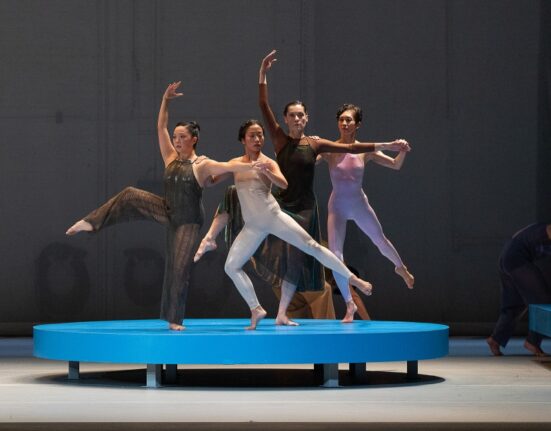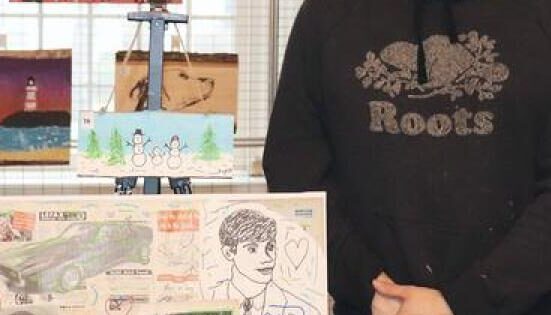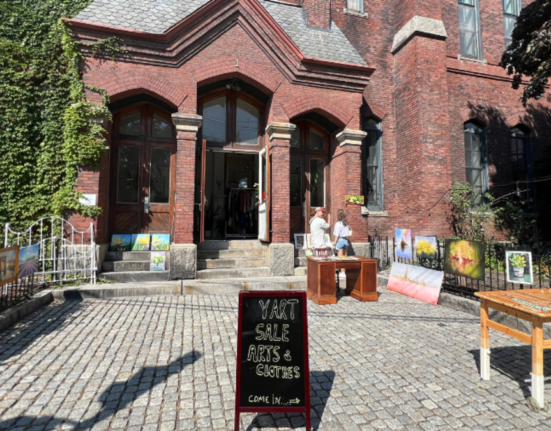Elon University’s Center for Race, Ethnicity and Diversity Education hosted a beading workshop, as well as an Indigenous digital art showcase, as part of its Native American and Indigenous Heritage Month celebration.
The workshop was led by Vickie Jeffries, a tribal administrator for the Occaneechi Band of the Saponi Nation, and took place in the CREDE office Nov. 13.
“Inventive Minds: An Indigenous Art Showcase” displayed a variety of artworks from different time periods. Set up in the CREDE office on the second floor of Moseley, viewers walked around and looked at art from museums, caves and more.
Sitting beside the art pieces were explanations of the meanings behind the works, such as the importance of the colors, symbols and history of the pieces. Attendees could also scan QR codes on the descriptions to learn more.
The showcase on Nov. 8 featured photographs of rock paintings found inside a cave in Alabama displayed as a group of works on one screen. According to the description, the paintings were discovered in an unnamed cave in 1999. While only a few of the paintings were pictured in the display, there were thousands of images found within the cave.
According to Jan Simek, an archeologist and professor at the University of Tennessee, the paintings are thought to have held spiritual importance because the region’s indigenous groups believed that caves were “portals to the underworld.”
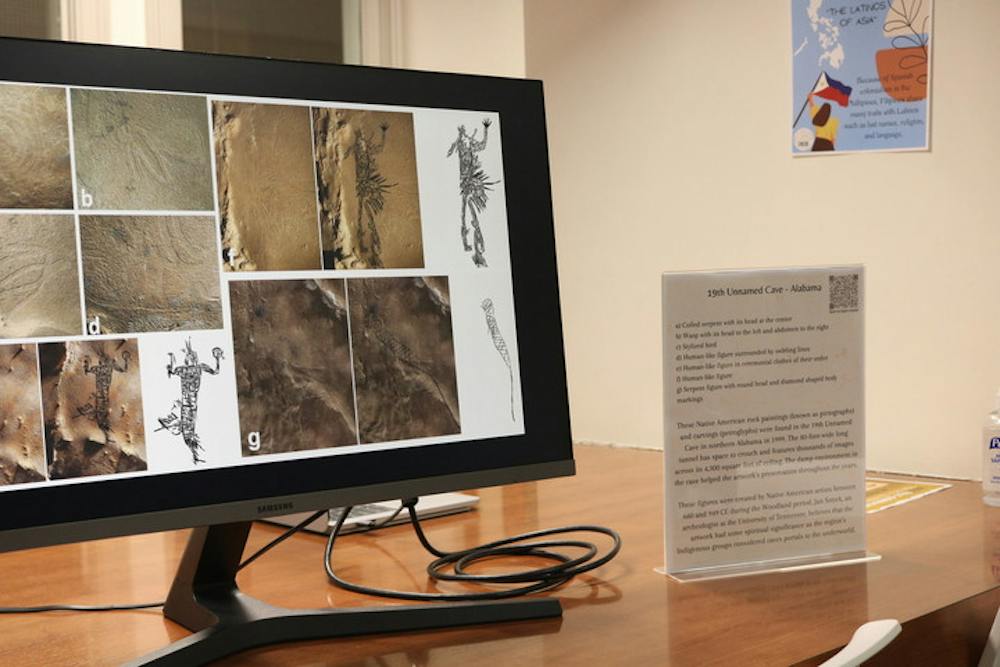
Paintings from an unknown cave in Alabama on display in Elon’s Center for Race, Ethnicity and Diversity Education on the second floor of Moseley on Nov. 8. The creators of the paintings are unknown, as the art dates back to 660 and 949 C.E.
Many students involved in the CREDE’s African-American, Black, Latinx, Hispanic, Asian, Pacific Islander, Native American, Alaskan Native and Multiracial initiatives — or ALANAM — coordinated and attended the event as well.
Sophomore Maylee Clerici works in ALANAM initiatives as a student coordinator and member of the organization’s marketing team. She said that she played a role in choosing to display the rock paintings because they “reveal a little bit about the mystery of the past and how Native American communities thrived in those earlier years.”
According to Clerici, the artists are unknown.
“It’s a little bit unknown who the artists are but the artists date back to 660 and 949 C.E. during the woodland period,” Clerici said.
Another piece of artwork displayed was a painting featuring symbolism of turquoise. The piece, titled “Turquoise Water and Sky: The Stone and its Meaning,” comes from the Museum of Indian Arts and Culture in Santa Fe, New Mexico.
According to the painting’s description, turquoise represents the sky and the water in Native American culture, and is said to have healing and protective powers. It’s commonly used in Pueblo and Navajo ceremonies and gatherings, according to the MIAC.
Native American and Indigenous Heritage month continues through the entire month of November. The CREDE started its Heritage month celebrations with a kick-off event featuring indigenous artists, food and prizes on Nov. 1 and plans to continue the celebrations by supporting local Indigenous artists.
Junior Jorah Midgette is a member of ALANAM initiatives as well and said that the best way to get involved with NAHM activities and ALANAM events is to keep in touch with the CREDE. She also said that the goal of these events is to “prioritize space for native and indigenous students here on campus.”

